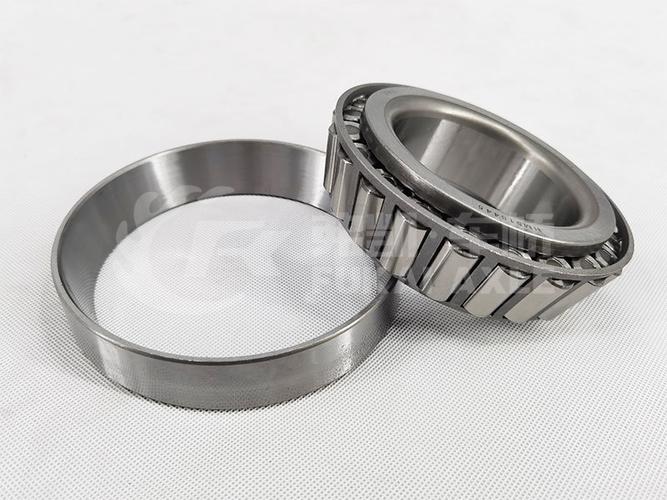Industrial Heavy Duty Roller Bearings: 5 Essential Insights for Optimal Performance
Industrial heavy duty roller bearings are critical components designed to withstand extreme loads and harsh operating conditions in industries like mining, construction, and manufacturing. These precision-engineered bearings ensure smooth rotational motion while reducing friction, making them indispensable for heavy machinery and conveyor systems requiring exceptional durability and reliability.
1. heavy duty roller bearings applications2. industrial roller bearings maintenance
3. heavy duty bearings selection guide
4. roller bearings vs ball bearings
5. industrial bearing installation tips
1. Heavy Duty Roller Bearings Applications

Heavy duty roller bearings are extensively used in industries requiring robust load-bearing solutions. In mining operations, they support massive crushers and vibrating screens handling abrasive materials. Construction equipment like bulldozers and cranes rely on these bearings to manage dynamic loads during lifting and earthmoving tasks. Manufacturing assembly lines utilize them in conveyor systems transporting heavy components across production floors. Their tapered or spherical designs enable axial and radial load distribution simultaneously, making them ideal for steel mills where rollers must endure high temperatures and continuous operation. Offshore drilling platforms also depend on corrosion-resistant variants to function in saltwater environments, demonstrating their versatility across multiple sectors.
2. Industrial Roller Bearings Maintenance
Proper maintenance significantly extends the service life of industrial roller bearings. Regular lubrication using high-temperature greases prevents metal-to-metal contact and reduces wear. Vibration analysis tools should monitor bearing performance monthly to detect early signs of pitting or brinelling. Contamination prevention is crucial – use sealed bearings or install protective shields in dusty environments. Always follow manufacturer-recommended torque values during reassembly to avoid over-tightening, which causes premature failure. Implement infrared thermography to identify abnormal heat patterns indicating lubrication breakdown or misalignment. Establish a documentation system to track bearing replacement cycles and lubrication schedules, ensuring compliance with ISO 281:2007 standards for bearing longevity.
3. Heavy Duty Bearings Selection Guide
Selecting appropriate heavy duty bearings requires evaluating four key parameters: load capacity, speed rating, environmental conditions, and mounting constraints. For radial-heavy loads in conveyor systems, choose cylindrical roller bearings with high radial load ratings. Applications involving combined axial/radial loads demand tapered roller bearings. Consider bearing materials – chrome steel (SAE 52100) suits general purposes, while stainless steel (AISI 440C) resists corrosion in chemical plants. Check dynamic load ratings (C) in product catalogs to ensure they exceed operational requirements by 15-20%. Verify temperature limits – standard bearings typically handle -30°C to 120°C, while special designs withstand up to 350°C. Always consult engineering diagrams to confirm shaft/housing tolerances match ISO tolerance class recommendations.
4. Roller Bearings vs Ball Bearings
While both bearing types reduce friction, roller bearings excel in heavy-load scenarios. Ball bearings use point contact, making them suitable for high-speed, low-load applications like electric motors. Roller bearings employ line contact, distributing loads over larger surface areas – ideal for crushers handling 20-ton rock loads. Tapered roller bearings uniquely manage combined axial/radial loads, unlike angular contact ball bearings which prioritize axial loads. Noise levels differ significantly: precision ball bearings operate quieter in medical equipment, whereas roller bearings prioritize durability over acoustic performance. Maintenance intervals vary – roller bearings generally require more frequent lubrication in harsh environments. Cost factors favor ball bearings for light-duty applications, while roller bearings provide better ROI in heavy industries through extended service life under stress.
5. Industrial Bearing Installation Tips
Correct installation prevents 34% of premature bearing failures according to ABMA studies. Always clean housing and shafts with non-residue solvents before installation. Use induction heaters to evenly expand bearings to 80-110°C for interference fits, avoiding open-flame heating. Apply mounting force exclusively to the ring being pressed – never hammer directly on rollers or cages. For cylindrical bore bearings, utilize hydraulic nuts for precise axial drive-up measurement. Verify alignment with dial indicators (≤0.05mm runout tolerance). Post-installation, perform rotational tests to ensure smooth operation without binding. Implement proper preloading for tapered roller bearings using torque wrenches calibrated to manufacturer specifications. Document installation dates and initial lubrication details for future maintenance reference.
Understanding these five critical aspects – from diverse industrial applications to precision installation techniques – empowers engineers to maximize heavy duty roller bearing performance. Whether optimizing existing machinery or designing new systems, this knowledge addresses common challenges in load management, maintenance planning, and component selection. The following sections delve deeper into each topic, providing actionable strategies to enhance operational efficiency and reduce downtime in demanding industrial environments.
Industrial heavy duty roller bearings form the backbone of modern heavy machinery, requiring informed selection, meticulous maintenance, and technical expertise. By implementing the insights covered – application-specific designs, proactive lubrication practices, precision installation methods, and comparative technical analysis – operations managers can significantly improve equipment reliability. These strategies collectively contribute to reduced operational costs and enhanced productivity across industries where bearing performance directly impacts bottom-line results.




 13869596835
13869596835